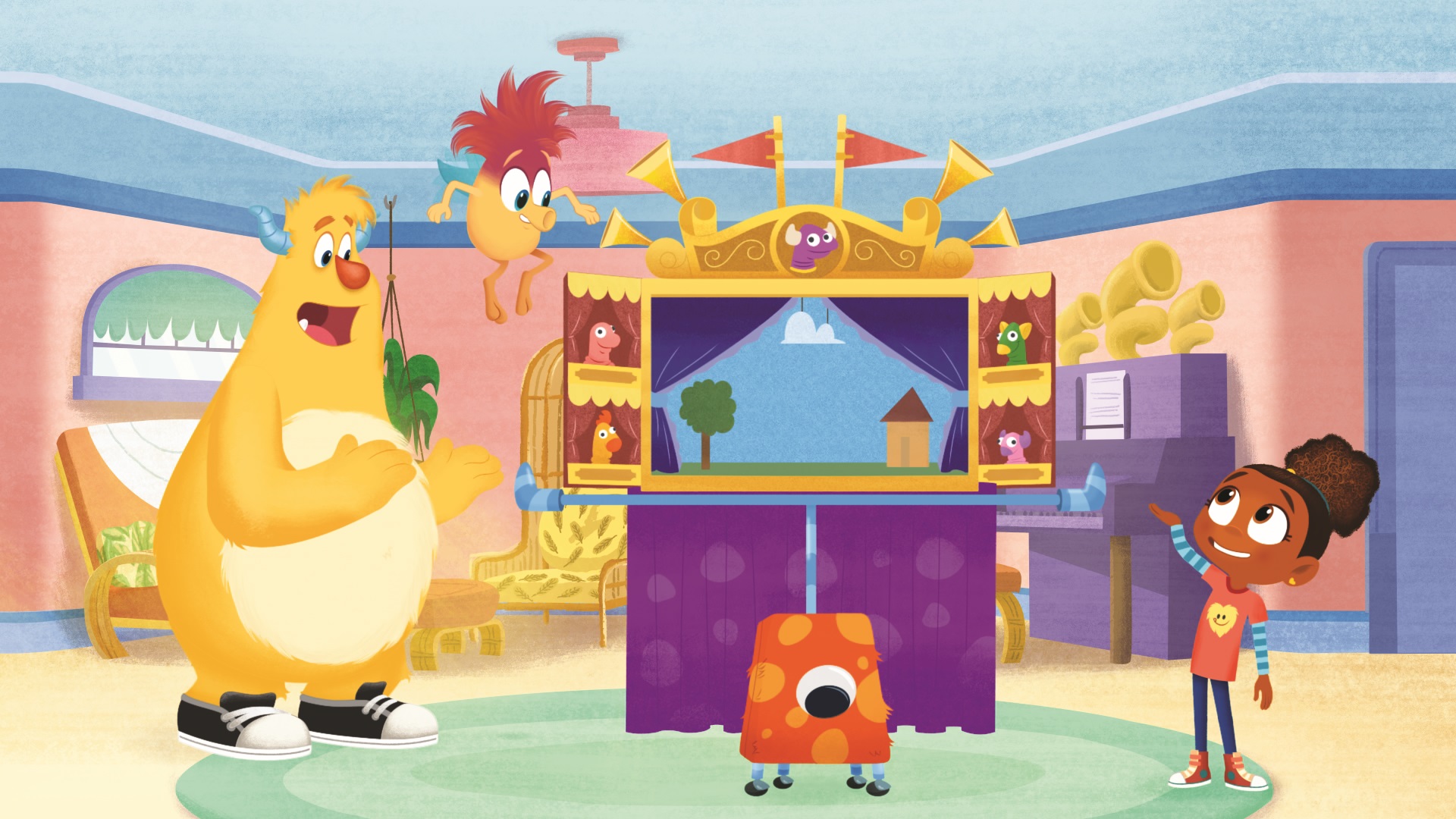‘Sesame Street’ Parent Bets on ‘Esme & Roy’ to Open New Production Avenues
By Brian Steinberg
LOS ANGELES (Variety.com) – The company behind “Sesame Street” is willing to risk a few temper tantrums in its pursuit to expand.
Sesame Workshop is readying the launch of “Esme & Roy,” an animated series that will run on HBO and expand a partnership that has been in place since the AT&T pay-cable service agreed to run the company’s flagship “Sesame Street” in 2015 . The show centers on two “monster babysitters” – a young girl and her shaggier, yellow, horned counterpart – who help their young charges avert “monster meltdowns” while getting them to play games and take part in scheduled activities.
The series, which debuts 9:30 a.m. eastern August 18 on HBO, also serves to send a new signal that wants to broaden beyond Big Bird and Oscar the Grouch in the not-too-distant future.
“We are always going to be very boutique-y and selective, with a focus on quality as opposed to quantity,” says Steve Youngwood, president of media and education and chief operating officer of Sesame Workshop, in an interview. Still, he notes, “if we are going to be true to our mission in today’s fragmented world, we need a broader portfolio of properties and content.”
Sesame has launched other series in the past, including the popular kids’ series “The Electric Company” and “3-2-1 Contact” in the 1970s, and, more recently, “Pinky Dinky Doo” for Nickelodeon’s Noggin cable outlet. But “Esme & Roy” will be the company’s first animated series in more than a decade. In recent years, the nonprofit once known as the Childrens Television Workshop had to focus more intently on keeping its flagship sailing, particularly as revenues from DVDs dried up thanks to children turning quickly to subscription-video services like Netflix and Amazon.
“If we are going to fulfill our mission, we had to go beyond ‘Sesame Street’ from a creative and educational and product perspective,” says Youngwood. “’Esme & Roy’ is sort of the next step in that chapter.”
Modern children may find several familiar elements in the new animated story. The two central characters serve as guides of sort to help children play in an era when they are often what Rosemarie Truglio, vice president of education and research at Sesame Workshop, calls “overscheduled.” Millie Davis, known to fans of the PBS Kids series “Odd Squad,” and Patrick McKenna, a veteran actor and voice-over artist, will bring the characters to life.
Thanks to research, “we know that children aren’t playing as much as they should be,”Truglio says. “We want to model a whole range of play patterns. We have different categories of play we are highlighting,” including using imagination to pretend; building and making things; and taking part in structured activities.
In one episode of the new series, Esme and Roy must get a young female monster ready for a morning trip to camp, even though the child wants only to play games (The solution: turning her A.M. routine into a game itself). In another, the duo must take a monster siblings on a trip to the planetarium, despite the fact that one of the kids won’t get dressed. When tempers flare, Esme uses songs and breathing techniques to keep things cool.
“You see these characters, these little monsters have these meltdowns, big emotions, frustration, anger, disappointment. You see it and that it’s very visible and very clear and you don’t often see that on TV,” notes Kay Wilson Stallings, senior vice president of creative development at Sesame Workshop.
Sesame originally prepared an order of 13 half-hour episodes of “Esme & Roy,” says Youngwood, but executives doubled the order to 26.
Sesame is walking down other roads as well. In June, it struck a deal with Apple to produce a new slate of kids’ programming for its still-nascent streaming-video service. Under the pact with HBO, Sesame Workshop was given the opportunity to create a new series as well as one featuring one of the “Sesame Street” characters. “We are still doing some creative development around that area. Nothing is confirmed about where we may go,” says Youngwood. “It’s all about finding the right creative and curriculum concepts where we think we can make a difference.”

